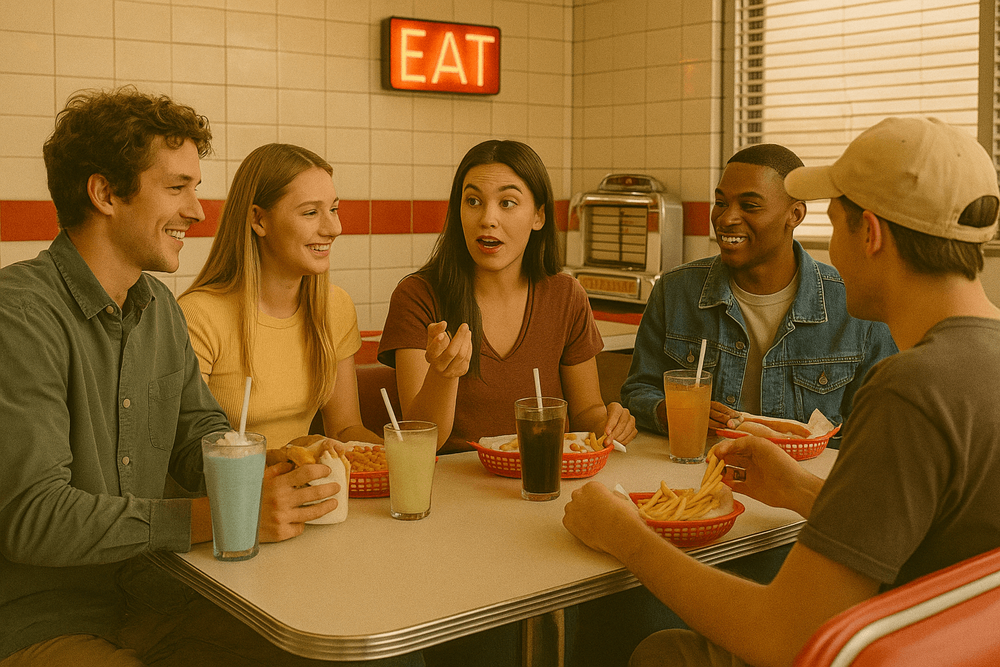
Slang for Eating Out: How Language Shapes the Dining Experience
Jai Tamboli
Explore how slang transforms your dining moments.
Language plays a pivotal role in how we perceive and engage with the world, and the realm of dining is no exception. From casual hangouts to formal meals, slang for eating out enriches the social fabric of our dining experiences. This blog explores the fascinating ways slang influences the way people talk about dining out, affecting everything from menu choices to social interaction.
Understanding Slang for Eating Out
Slang for eating out encompasses informal words and phrases used to describe restaurants, meals, social dining occasions, and eating behaviors. These expressions emerge naturally within communities and social groups, growing out of cultural influences and shared experiences. They serve as a way to communicate more expressively and connect over common dining customs.
When we look at the evolution of slang for eating out, it is evident that these terms can vary widely across regions, age groups, and social circles. Whether it’s saying ‘grub’ instead of food or ‘chowing down’ instead of eating, each phrase adds personality to the dining experience.
The Role of Slang in Dining Culture
Slang for eating out doesn’t just add flair — it shapes cultural meanings around food and dining venues. By using certain terms, diners create in-group identification, signaling familiarity with particular dining styles or local eateries.
For example, calling a quick meal a ‘grab-and-go’ shows not only convenience but also participation in a fast-paced dining culture. Likewise, using the phrase ‘dine and dash’ reveals awareness of dining etiquette — or lack thereof — while also hinting at rebellious undertones.
This dynamic use of language makes eating out a culturally rich act, influenced heavily by the slang people choose.
Popular Examples of Slang for Eating Out
Here are some commonly used slang terms that bring character and emotion to the act of dining out:
- Grub – A casual term for food, making eating sound more relaxed and approachable.
- Pig out – To eat a large amount of food, often indulgently.
- Chow down – To eat with enthusiasm.
- Nosh – To snack or eat small portions casually.
- Dine-in – Eating inside the restaurant rather than taking food away.
- Takeout – Food bought to be eaten elsewhere.
- Happy hour – A specific time when drinks and sometimes food are discounted, promoting social dining.
- Foodie – Someone passionate about food, often implying a deeper knowledge and appreciation of dining.
The use of these phrases can instantly set the tone for the experience and also helps in describing what kind of dining is taking place — whether casual, indulgent, or social.
How Slang Influences Social Interactions When Eating Out
Slang for eating out is more than just fun language — it actively influences how people interact during meals. When diners use slang, they often signal belonging and comfort, which facilitates a more relaxed and enjoyable atmosphere.
Groups of friends might say things like, ‘Let’s grab some grub,’ encouraging spontaneity and camaraderie. Conversely, formal settings typically avoid slang, reflecting respect and formality.
Moreover, slang can influence expectations. If someone suggests going for a ‘quick bite,’ it sets a timeframe and mood distinct from saying ‘let’s have dinner,’ which sounds more formal and extended.
Thus, the choice of slang words can shape the dynamics of an outing, controlling the flow and social fabric of the dining experience.
The Impact of Regional and Cultural Differences in Slang for Eating Out
Slang for eating out varies significantly depending on region and culture. In the United States, ‘chow down’ might be common, while in the UK, one might hear ‘scran’ for food or ‘fancy a cuppa’ referring to a tea break.
These variations are important because they reflect local food cultures and social habits. For travelers or food lovers, understanding such slang can deepen cultural appreciation and improve communication.
Additionally, online communities and social media have contributed to the spread and hybridization of slang, merging traditional expressions with new-age language. This evolution ensures slang for eating out continues to be relevant and adaptive to contemporary dining trends.
The Role of Media and Pop Culture in Popularizing Eating Out Slang
Movies, TV shows, and social media influencers play a crucial role in popularizing slang for eating out. When a popular TV series features characters eating out at an iconic diner and uses catchy slang terms, those phrases quickly become part of everyday lexicon.
Social media platforms like Instagram and TikTok also accelerate this phenomenon by showcasing food and dining experiences while tagging posts with slang-based captions. These channels contribute to the widespread adoption and variability of slang terms, giving them new layers of meaning and appeal.
Why Embracing Slang for Eating Out Can Enhance Your Experience
Using slang for eating out makes conversations more engaging and relatable. It adds a layer of cultural richness and helps break the ice among strangers or acquaintances at meal settings.
Moreover, knowing and using local slang can help diners navigate menus, order confidently, and bond with staff or locals who share that language. It makes eating out not just about nourishment but about storytelling and shared experience.
Finally, slang terms often reveal something about the food culture itself — whether it’s casual, luxurious, quick, or indulgent — which can enhance a person’s appreciation of dining beyond just taste.
Conclusion
The use of slang for eating out is an important and vibrant part of how language shapes our dining experiences. From the words we use to describe the food to the social context surrounding meals, slang adds warmth, color, and nuance to eating out.
Embracing these expressions can deepen cultural understanding, improve social interaction, and ultimately make the simple act of dining out a richer and more enjoyable experience. So next time you’re heading out for a meal, try incorporating some slang for eating out — you might find your dining experience transformed in unexpected and delightful ways.